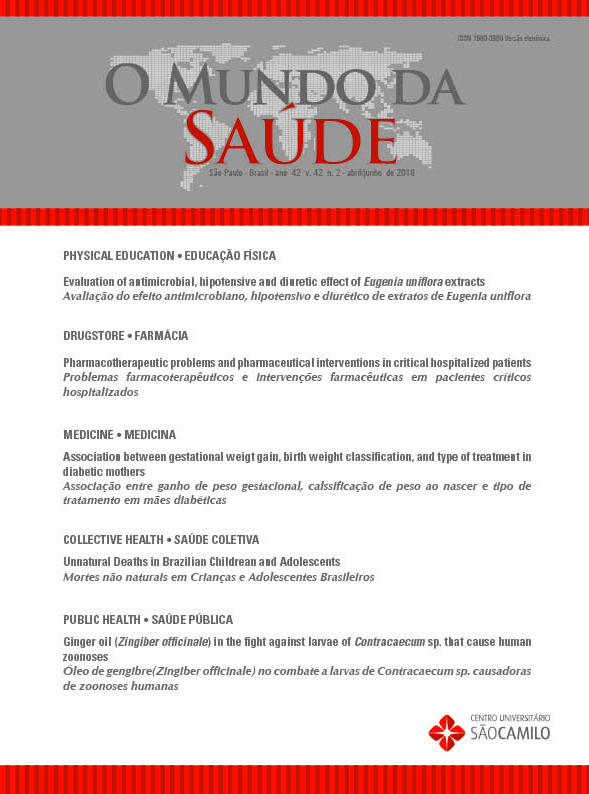Impact of food processing on antioxidants in adults living in rural areas
DOI:
https://doi.org/10.15343/0104-7809.20184202516533Keywords:
Food Consumption, Antioxidant, Adults, Countryside, Processed foodsAbstract
Currently, it is widely recognized that in natura or minimally-processed foods are being substituted by processed and ultraprocessed products. The objective of this study was to evaluate the relationship between the degree of food processing and antioxidant consumption in adults living in the rural area of the city of Viçosa, MG. A total of 64 adults from 11 rural census tracts were evaluated. Data collection was performed immediately through the measurement of blood pressure and the application of a survey on eating habits to evaluate food intake. The foods consumed were grouped for analysis according to the NOVA classification and the total antioxidant capacity of the diet was evaluated using existing databases of Ferric Reducing Antioxidant Power (FRAP) values. There was a positive correlation between the consumption of antioxidants and calories from in natura foods (r = 0.289, p = 0.021), and between the consumption of calories from processed foods and calories from butter (r = 0.371, p = 0.003). In addition, a difference was observed in the consumption of calories from ultraprocessed foods between the sexes, being higher in the females (p = 0.02). Therefore, the results found reinforce the current recommendation of the Food Guidelines for the Brazilian Population: “Always prefer in natura or minimally-processed foods and culinary preparations to ultra-processed foods”.






























